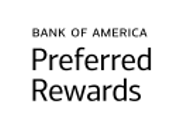A Fixed-rate mortgage is a home loan with a fixed interest rate for the entire term of the loan. The Loan term is the period of time during which a loan must be repaid. For example, a 30-year fixed-rate loan has a term of 30 years.
An Adjustable-rate mortgage (ARM) is a mortgage in which your interest rate and monthly payments may change periodically during the life of the loan, based on the fluctuation of an index. Lenders may charge a lower interest rate for the initial period of the loan. Also called a variable-rate mortgage.
Note: Typically Bank of America adjustable-rate mortgage (ARM) loans feature an initial fixed interest rate period (typically 5, 7 or 10 years) after which the interest rate becomes adjustable every six months for the remainder of the loan term.

